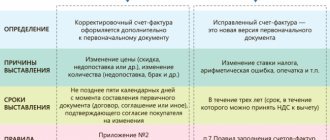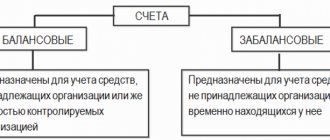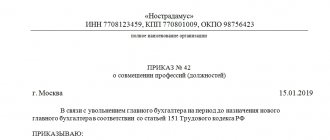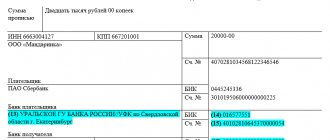L. V. Sologubova author of the article, consultant to Askon on accounting and taxation in budgetary organizations
On January 1, 2021, new federal accounting standards come into force. But not all institutions will need to apply new standards and adjust accounting policies.
- Reserves
(Order No. 256n dated December 7, 2021 “On approval of the federal accounting standard for public sector organizations “Inventories”).
- Long-term contracts
(Order of the Ministry of Finance of Russia dated June 29, 2018 N 145n “On approval of the federal accounting standard for public sector organizations “Long-term agreements”).
- Reserves. Disclosure of contingent assets and contingent liabilities
(Order of the Ministry of Finance of Russia dated May 30, 2018 N 124n “On approval of the federal accounting standard for public sector organizations “Reserves. Disclosure of information about contingent liabilities and contingent assets”).
- Concession agreements
(Order of the Ministry of Finance of Russia dated June 29, 2018 N 146n “On approval of the federal accounting standard for public sector organizations “Concession agreements”).
- Budget information in financial statements
(Order of the Ministry of Finance of Russia dated February 28, 2018 N 37n “On approval of the federal accounting standard for public sector organizations “Budget information in accounting (financial) statements”).
Accounting rules: what they are and why they are needed
PBUs or accounting regulations (sometimes informally referred to as accounting rules) are regulations that establish the procedure for preparing financial statements and maintaining accounting in one or another area of a company’s business activities.
PBUs can regulate the specifics of accounting for various assets, liabilities, and individual facts of economic activity. Find out what standards to rely on when doing accounting here.
Accounting standards are generally issued by the Ministry of Finance of the Russian Federation, and for credit organizations - by the Bank of Russia. All organizations must comply with the standards established by the PBU, unless exceptions are expressly stated in a particular provision. For example, paragraph 3 of PBU 8/2010 states that the rules enshrined in the relevant source may not be applied by organizations that use simplified accounting schemes. These include, in particular, small businesses, non-profit organizations and other entities (information of the Ministry of Finance dated June 29, 2016 No. PZ-3/2016).
In 2021, 24 different accounting standards are applied in the Russian Federation, defining accounting rules. Let's take a closer look at them.
Standard "Inventories"
From January 1, 2021, the FSBU “Reserves” will come into effect.
According to this standard, the NFA will include inventories and work in progress (clause 7 of the “Inventories” Standard).
Work in progress before this standard was accounted for, as is known, on account 109 (clause 137 of Instruction 157n).
According to this standard (clause 7 of the Inventories Standard), inventories must meet the criteria of an asset - owned, beneficial and controlled
.
When preparing to implement this standard, also pay attention to the Methodological Recommendations for its application - letter of the Ministry of Finance of the Russian Federation dated August 1, 2021 No. 02-07-07/58075.
If the facility has biological products (derived from biological assets), then this will be subject to the Inventory standard.
Biological assets are regulated by a different standard.
Starting from the new year, it is necessary to distinguish 4 groups of supplies:
- materials;
- finished and biological products;
- goods;
- other supplies.
According to paragraph 117 of Instruction No. 157n there are 9 groups.
The standard allows the use of material supplies for a period of more than 12 months (clause 7 of the Standard “Inventories”).
The generalizing group will be other inventories (clause 7 of the Standard “Inventories”).
“Unfinished” will now be an independent group.
According to Instruction 157n, “unfinished” means materials for production (clause 137).
It would be advisable to group, obviously, inventories in accordance with the requirements of the new standard and reflect them in the accounting policies.
According to the new standard, “inventories” are not only unfinished products, but also works and services.
In universities, colleges, and institutes, the financial year does not coincide with the academic year and, accordingly, the service should be considered as work in progress.
It should also be noted that there is a possibility of inventory reclassification - a transfer from one group to another.
If the transfer is carried out for the needs of the institution, then accounting is kept at the actual cost, which is recognized as the original
Please also note that the standard does not apply to library collections, biological assets, construction in progress, cultural heritage and financial instruments.
Balances at the beginning of the year will need to be carried over inter-reporting period using the 401 30,000 account.
To use these standards, the institution must adjust its accounting policies for 2021.
List of PBUs on accounting in 2020-2021
The accounting rules applied in the Russian Federation in 2020-2021 are presented in the following list:
- PBU 7/98 - establishes the procedure for reflecting events after the reporting date in accounting;
- PBU 4/99—establishes the methodological basis for financial reporting of legal entities;
- PBU 9/99 - establishes the procedure for reflecting income in the accounting of organizations;
- PBU 10/99 - fixes the procedure for reflecting expenses in the accounting of legal entities;
Read about PBU 9/99 and 10/99 here .
- PBU 13/2000 - regulates the reflection in accounting of information on state assistance to commercial firms;
- PBU 5/01—regulates the reflection of inventories in accounting;
From 2021, instead of PBU 5/01, it will be necessary to apply FSBU 5/2019. Find out what nuances should be taken into account when applying the new standard in the Review from ConsultantPlus. To do everything right, get trial access to the system and study the material for free.
- PBU 6/01—establishes the rules for reflecting fixed assets in accounting;
PBU 6/01 is canceled from 01/01/2022. Instead, two new FSBUs are being introduced: 6/2020 “Fixed Assets” and 26/2020 “Capital Investments”. ConsultantPlus experts explained in detail what the new standards will change compared to PBU 6/01 in their Review, which you can view for free after receiving trial access to K+.
- PBU 16/02 - regulates the disclosure of information on discontinued activities in accounting;
- PBU 17/02 - regulates the reflection of information on expenses for scientific research in accounting;
- PBU 18/02—establishes the rules for reflecting information on income tax calculations in accounting;
ConsultantPlus experts explained in detail what has changed in PBU 18/02 since 2020 and how to apply its updated version. Get trial access and go to the Ready solution.
- PBU 19/02—regulates the rules for reflecting financial investments in accounting;
- PBU 20/03 - establishes the rules for reflecting in accounting information about the participation of a business entity in joint activities;
- PBU 3/2006—regulates the reflection in accounting of information about the assets and liabilities of a company in foreign currency;
- PBU 14/2007 - establishes the rules for reflecting information about intangible assets in accounting;
- PBU 1/2008—defines how an enterprise should formulate and disclose accounting policies;
- PBU 2/2008 - establishes rules for disclosing in accounting information about the activities of construction contractors (or subcontractors);
- PBU 11/2008 - establishes how to disclose information about related parties in reporting;
- PBU 15/2008 - establishes how to reflect in accounting information about expenses on loans and borrowings;
- PBU 21/2008 - establishes how to disclose information about changes in estimated values in reporting;
- PBU 8/2010 - regulates how estimated and contingent liabilities, as well as contingent assets, should be reflected in accounting;
- PBU 12/2010 - establishes the procedure for reflecting information by segments in the accounting records of organizations;
- PBU 22/2010 - regulates the procedure for correcting errors and reflecting information about them in accounting;
- PBU 23/2011 - regulates how a cash flow statement should be prepared;
- PBU 24/2011 - establishes the procedure for reflecting information on expenses for the development of natural resources in accounting.
FSBU 25/2018 “Rent”, approved by order of the Ministry of Finance of Russia dated October 16, 2018 No. 208n, will begin to be applied from reporting for 2022. You can read about it here.
Standard “Concession Agreements”
A concession agreement is a mutually beneficial partnership between the state and business, in which the former relieves itself of part of the burden, for example, on the construction of some facility, and the latter gets the opportunity to earn money. The parties to the agreement are the grantor and the concessionaire.
Grantor
- the one who transfers the rights to the objects of the agreement. It can be a state, a subject of the Russian Federation, a municipality and some state-owned companies.
Concessionaire
- the one to whom rights are transferred. It can be an organization, individual entrepreneur or several companies that have entered into a simple partnership agreement.
In 2021, in preparation for the transition to the “Concession Agreements” standard, it is necessary to conduct an inventory.
When making an inventory of objects arising during the execution of concession agreements for the reporting year as of January 1, 2020, accounting data should be synchronized with monitoring data on the conclusion and implementation of concluded concession agreements. Rules for monitoring have been approved.
In accordance with the “Concession Agreements” standard, the transfer under this agreement of the property of an institution under operational management is reflected in account 101 and in off-balance sheet account 24.
Depreciation will be charged by the public sector organization as balance holder.
It will be necessary to form the cost of the created object on an off-balance sheet account.
New PBUs in 2021–2023
The Ministry of Finance is conducting a global development of federal accounting standards for 2021–2023. According to the order of the Ministry of Finance dated 06/05/2019 No. 83n, new PBUs will be developed and amendments will be made to the already published provisions. The plan for the development and implementation of innovations is shown in the table below.
| No. | PBU project name | Estimated effective date for mandatory application |
| Development of new federal standards | ||
| 1.1 | Reserves | 2021 |
| 1.2 | Intangible assets | 2021 |
| 1.3 | OS | 2021 |
| 1.4 | Unfinished capital investments | 2021 |
| 1.5 | Documents and document flow | 2021 |
| 1.6 | Non-profit activities | 2021 |
| 1.7 | Financial statements | 2021 |
| 1.8 | Income | 2022 |
| 1.9 | Participation in affiliated organizations and joint activities | 2022 |
| 1.10 | Financial instruments | 2022 |
| 1.11 | Debt costs | 2022 |
| 1.12 | Expenses | 2023 |
| Making changes to current PBUs | ||
| 2.1 | PBU 16/02 | 2020 |
| 2.2 | PBU 1/2009 | 2021 |
PBU 2014-2015
PBU are Accounting Regulations; they are needed for the standardization procedure for all accounting that accountants use in their work.
There are 24 of them. But for small businesses in 2014-2015. Only some of them are suitable for use. 09/11/2014Russian tax portal
PBUs may not be applied to small businesses; this is stated in the Regulations themselves. Let us consider in more detail which sections of the Regulations are specifically discussed:
- do not keep records of contracts that relate to construction contracts - PBU No. 2/2008;
- do not consider estimated and contingent liabilities, as well as contingent assets - PBU No. 8/2010;
- do not take into account calculations that relate to the profit tax of the company itself - PBU No. 18/02.
- Also, these subjects are granted permission not to engage in:
- revaluation of fixed assets (PBU No. 6/01);
- NMA (PBU No. 14/2007).
Use of PBU under the simplified tax system in 2014-2015.
Today, PBU in accounting is used to formulate the company’s accounting policy and its disclosure - No. 1/2008. To approve the established accounting policy, it is necessary to adhere to the named document, namely paragraph 4, which deals with:
- Methods for valuing assets (liabilities).
- Forms of primary documentation for accounting, accounting registers, internal accounting reporting.
- The procedure for conducting an inventory of not only assets, but also liabilities of the company.
- Working charts of accounts for accounting.
- Correct document flow.
- Technologies for processing accounting information.
- The procedure for controlling business transactions.
- Other decisions that arise during the organization of accounting.
The accounting policy of any company is designed to ensure not only complete recording of all facts of its activities in accounting, but also the timeliness of this recording in the relevant documentation - PBU No. 1/2008 - paragraph 6.
A company operating under the “simplified” system is also a small business entity, therefore, for such organizations, Russian legislation also provides for simplified accounting - Federal Law, Law No. 402, Article No. 20, paragraph 3.
Information about the simplified account must be reflected in the company’s accounting policy - PBU No. 1/2008 - paragraph 4.
According to the Federal Law (Law No. 402, Article No. 8, Part 5), accounting policies must be applied consistently in accounting - from the moment the company was founded to the present, every year. But some changes can be made to it based on the following events (Federal Law, Law No. 402, Article No. 8, Part 6 and PBU No. 1/2008 - paragraph 10):
- when there are changes in accounting requirements that are established at the legislative level by federal or industry standards of our state;
- when developing, implementing or choosing a different accounting mode, which can increase the quality of submission and collection of information about accounting objects;
- when the operating conditions of the economic entity itself change.
The listed innovations with changes in the accounting policy of the company are applied only from the beginning of the year (financial), although in the case due to the reason for any change, another date is possible - Federal Law, Law No. 402, Article No. 8, paragraph 7 and PBU No. 1/ 208 - paragraphs 8 and 11.
The following should be remembered: any accounting policy will be adopted at the beginning of the year by the management of the company. Thus, for the company’s accounting policy for 2015, such a documentary statement is recorded at the end of 2014.
Reflection of PBU in accounting policies
Let's consider a sample accounting policy of a company operating under the "simplified" system, with an explanation of all mandatory accounting regulations.
To develop such an accounting policy for the purpose of accounting, the following legislative documents are used:
- Federal Law, Law No. 402, dated December 6, 2011;
- Regulations on accounting and related reporting in our state, in accordance with Order No. 34n of the Ministry of Finance dated July 29, 1998;
- PBU No. 1/2008, approved by order No. 106n of the Ministry of Finance dated October 6, 2008;
- Chart of accounts (approved by order No. 94n of the Ministry of Finance dated October 31, 2000);
- Instructions for the use of the Chart of Accounts (approved by Order No. 94n of the Ministry of Finance dated October 31, 2000);
- Order No. 66n of the Ministry of Finance dated July 2, 2010.
Information table: principles of accounting policies and its main elements
| № | Significant accounting policies | Documentary justification |
| 1. | The accounting department (structural division of the company), headed by the chief accountant, conducts accounting | Federal Law, Law No. 402, Article No. 7, Part 3 |
| 2. | Double entry is used for accounting purposes. | Chart of accounts, Instructions for its use (according to Order No. 94n of the Ministry of Finance) |
| 3. | Automated accounting with the condition of applying the Chart of Accounts (Appendix 1) | Regulations on accounting and related reporting, paragraph 8 (according to Order No. 34n of the Ministry of Finance) |
| 4. | In the reporting documentation for accounting, all the results of the changed accounting policy are reflected prospectively | PBU No. 1/2008 - clause 15.1 |
| 5. | There is no allocation of separate divisions of the company to a separate balance sheet | — |
| 6. | The use of unified forms as forms of primary documentation for accounting, which are approved at the federal level by the executive branch of our state (the list of forms is in the Appendix to this accounting policy) | Federal Law, Law No. 402, Article No. 9, Part 4 |
| 7. | Officials (the list is available in Appendix 2) have the right to sign primary documentation for accounting | Federal Law, Law No. 402, Article No. 9, Part 2, Clause 7 |
| 8. | When maintaining accounting records, a unified accounting register is used (a special book for recording the actual conduct of business activities) - approved by the Appendix | Federal Law, Law No. 402, Article No. 10, Information No. PZ-10/2012 of the Ministry of Finance on the entry into force of the above law |
| 9. | For the preparation of internal interim accounting documentation, a calendar month is used as the reporting period | Federal Law, Law No. 402, Articles No. 14 (Part 3), No. 13 (Part 5), No. 15 (Part 4), PBU No. 4/99 - paragraph 49 |
| 10. | To determine the level of materiality, a special criterion is established in the amount of 5% (of the size of the accounting object or of the item in the financial statements) | PBU No. 22/2010 - paragraph 3, PBU No. 4/99 - clause 11 |
| 11. | Correction of a significant error, which was identified after the signing of the accounting reports for the entire year, can take place using entries for the current period for those accounting accounts of the month when this error was identified (without a retrospective recalculation of all financial statements) | PBU No. 22/2010 - paragraphs 9, 14 |
| 12. | Once a year, before the annual balance sheet is drawn up or in other cases (provided for by the laws of our state at the federal level with the agreement of industry standards that govern accounting), an inventory of property and liabilities should be carried out | Federal Law, Law No. 402, Article No. 11, Part 3 |
| 13.. | There is no need to revaluate fixed assets | PBU No. 6/01 - paragraph 15 |
| 14 | An accounting object should be used as a fixed asset if it is intended for use in the statutory activities of the company, for management needs, subject to the following conditions: - used for a long time - more than a year, — there will be no subsequent resale of this object, — its cost is more than 40 thousand rubles | PBU No. 6/01 - paragraphs 3-5 |
| 15. | For the beneficial use of fixed assets, deadlines are determined in accordance with the Classification of fixed assets (approved by Resolution No. 1 of the Government of the Russian Federation dated January 1, 2002) | PBU No. 6/01 - clause 20 Resolution No. 1 of the Government of the Russian Federation (clause 1, paragraph 2) |
| 16. | There is no use of reducing factors to the current norms of depreciation of fixed assets | — |
| 17. | Depreciation is calculated using the straight-line method (for all fixed assets) | PBU No. 6/01 - clause 18 |
| 18. | Suitable for write-off (as they are put into operation) are items that have a useful life of at least 12 months and an initial cost of up to 40 thousand rubles. | PBU No. 6/01 - clause 5 |
| 19. | The company's expenses for the reporting period should include costs for current and major repairs of property (except for costs for regular repairs that are carried out according to technological requirements) | PBU No. 6/01 - paragraph 27, Letter No. 07-02-18/01 Ministry of Finance |
| 20. | General account No. 10 “Materials” can reflect all production inventories (they are accounted for in the following accounts: 07 “Equipment for installation”, 10 "Materials", 11 “Animals in cultivation and fattening”) | Information No. PZ-3/2012 of the Ministry of Finance, paragraph 3.1, subparagraph “a” |
| 21. | Account 41 “Goods” is used to summarize information about finished products and goods | Information No. PZ-3/2012 of the Ministry of Finance, paragraph 3.1, subparagraph “c” |
| 22. | The inventory number is also a unit for accounting for inventories | PBU No. 5/01 - paragraph 3 |
| 23. | When recording acquired material inventories at actual cost, account 16 “Deviation in the cost of material assets” is not used. | PBU No. 5/01 - paragraph 5, Guidelines, paragraph 80 (approved by order No. 119n of the Ministry of Finance), Chart of accounts, Instructions for using the chart of accounts |
| 24. | Based on the average cost, all groups of inventories are assessed upon disposal | PBU No. 5/01 - paragraph 16 |
| 25. | Reflection of all types of inventories should be reflected in accounting at the prices at which they were purchased from suppliers, while account 16 “Deviations in the cost of material assets” is not applied | PBU No. 5/01 - paragraph 13, accounting chart of accounts, Instructions for using the Chart of Accounts, Regulations on accounting and financial reporting, paragraph 60 (approved by Order No. 34n of the Ministry of Finance) |
| 26. | Taking into account transportation and procurement costs (if purchased), the actual cost of goods is formed | — PBU No. 5/01 — clause 6, — Accounting chart of accounts, — Instructions for using the Chart of Accounts |
| 27. | There is no need to revaluate intangible assets | PBU No. 14/07 - paragraph 17 |
| 28. | There is no need to reflect depreciation of intangible assets in accounting | PBU No. 14/07 - paragraph 22 |
| 29. | Depreciation is calculated on all intangible assets using the straight-line method. | PBU No. 14/2007 - paragraph 28 |
| 30. | Account 20 “Main production” is used to summarize information about costs that are directly related to the production of products, their sale (works or | — Information No. PZ-3/2012 — Ministry of Finance, paragraph 3.1, subparagraph “b” |
| 31. | Account 76 “Settlements with various debtors and creditors” (procedure for summarizing information about debts - receivables and payables) | Information No. PZ-3/2012 of the Ministry of Finance, paragraph 3.1, subparagraph “g” |
| 32. | All borrowing costs are also recognized with other expenses. | PBU-15/2008, paragraph 7 |
| 33. | Account 51 “Current accounts” (accounting for funds in banks) | Information No. PZ-3/2012 of the Ministry of Finance, paragraph 3.2, subparagraph “a” |
| 34. | Account 80 “Authorized capital” (capital accounting) | Information No. PZ-3/2012 of the Ministry of Finance, paragraph 3.2, subparagraph “b” |
| 35. | As funds are received from buyers (customers), revenue is recognized, subject to certain conditions - subparagraphs “a”, “b”, “c”, “d”, after repayment of debt, expenses are also recognized | — PBU No. 10/99 — clause 18, — PBU No. 9/99 — clause 12 |
| 36. | Account No. 99 “Profits and losses” (accounting for financial results) | Information No. PZ-3/2012 of the Ministry of Finance, paragraph 3.2, subparagraph “c” |
| 37. | Without using PBU, income and expenses under a construction contract should be recognized | PBU No. 2/2008 - clause 2.1 |
| 38. | The series acts as a unit of accounting for financial investments | PBU No. 19/02 - clause 5 |
| 39. | Other expenses include costs associated with the acquisition of financial investments that do not exceed the level of materiality (clause 10 of this accounting policy) | PBU No. 19/02 - clause 11 |
| 40. | Quarterly it is necessary to adjust the current market value of financial investments, which determine it | PBU No. 19/02 - paragraph 20 |
| 41. | All groups of financial investments that do not determine the current market value must be recorded in accounting at the original cost of each unit of financial investment | PBU No. 19/02 - paragraph 21 |
| 42. | When writing off, all groups of financial investments must be assessed, which will not determine the current market value, at the original cost of each unit of financial investments | PBU No. 19/02 - paragraph 26 |
| 43. | An annual check for depreciation of financial investments is carried out to create a reserve for the depreciation of financial investments. | PBU No. 19/02 - paragraph 38 |
| 44. | Deductions are made quarterly to the reserve for doubtful debts | Regulations, paragraph 70, order No. 34n of the Ministry of Finance (dated July 29, 1998), PBU No. 1/2008 - paragraphs 6, 7 |
| 45. | There is no need to create a reserve for upcoming vacation payments to workers | PBU No. 8/2010 - paragraph 3 |
| 46. | There is no need to apply PBU No. 18/02 | PBU No. 18/02 - paragraph 2 |
| 47. | There is no need to apply PBU No. 11/2008 | PBU No. 11/2008 - paragraph 3 |
| 48. | There is no need to apply PBU No. 16/02 | PBU No. 16/02 - clause 3.1 |
| 49. | Appendix 3 contains a list of all officials who have the right to receive accountable funds for a period of thirty calendar days (provision of advance reports regarding accountable amounts, except for travel allowances). After a business trip, the worker must provide an advance report within three days, in which he indicates all his expenses. | Government Decree No. 749, paragraph 26 |
| 50. | The manager approves the document flow schedule, compliance with which is controlled by the chief accountant | Regulations, paragraph 8 |
| 51. | Balance sheet forms and profit and loss statements must be used to prepare interim and annual accounting documents | Order No. 66n of the Ministry of Finance, clause 6.1 |
| 52. | Reporting documentation on accounting can be submitted in a reduced volume (the decision to include reporting documents on changes in capital and financial movements in the accounting documentation is made as necessary, that is, it is necessary to provide more important information in the appendices to the balance sheet, in connection with which it is impossible to assess the financial position the company or the results of its activities) | Order No. 66 of the Ministry of Finance, paragraph 6 |
Post:
Comments
Results
The procedure for reflecting information about various facts and results of economic activities of business entities in accounting is regulated by separate sources of law - PBU. In 2021, there are 24 of them, and the 25th has already been approved, but has not yet entered into force. Over time, they will be replaced by new accounting regulations - federal standards.
You can learn more about the specifics of PBU from the articles:
- “Accounting for currency transactions (PBU, postings)”;
- “What are the main differences between PBU and IFRS?”.
You can find more complete information on the topic in ConsultantPlus. Free trial access to the system for 2 days.
Draft standard “Documents and document flow in accounting”
This standard is intended for everyone except the public sector. Document flow here refers to the movement of accounting documents. But the standard does not apply to taxation (invoices, sales books and purchase books are regulated by Decree of the Government of the Russian Federation of December 26, 2011 No. 1137).
How the document should be drawn up:
- The document must be drawn up in Russian, except in cases established by this standard. A document drawn up in a foreign language must contain a line-by-line translation into Russian (clause 4 of the draft standard).
- The translation does not require notarization. It is important that the organization has someone responsible for the quality of translation, but he does not necessarily have to have a diploma as a translator. The names of these employees can be included in the job description (clause 4 of the draft standard).
- If the legislation or rules of the country in which the company operates outside the Russian Federation require documents to be drawn up in the language of that country, then the documents are drawn up in a foreign language (clause 5 of the draft standard).
How to make entries in accounting registers
Such records must be kept in rubles, regardless of the actual currency of the fact of economic life and (or) place of business.
If the cost is indicated in foreign currency, entries are made simultaneously in both rubles and foreign currency.
The register must contain line-by-line translation.
If the primary document is drawn up in a foreign language because it was brought by an accountable person, and accounting registers are compiled on the basis of these documents, then they will be in Russian.
How to prepare accounting documents
If the primary document is drawn up on the basis of another document containing information about the fact of economic life, it must contain instructions on the corresponding supporting document (clause 8). For example, an advance report is drawn up on the basis of primary documents: checks, receipts, tickets, boarding passes, hotel accounts, etc.
If the date of preparation of the primary document differs from the date of the fact of economic life, such a document must contain the date of the commission of the fact of economic life (clause 9). For example, work reports for April were signed on May 4. The completion date is April 30, and the signing date is May 5.
What does the new project allow you to do?
Everything that is established by Federal Law No. 402-FZ of December 6, 2011 continues to apply. That is, the right remains to determine the form of primary documents, except for bank and cash documents. The “Documents and Document Flow in Accounting” standard does not eliminate the rights that existed previously.
The primary document documents ongoing facts of economic life - the accrual of interest, depreciation of assets, changes in the value of assets.
If you need to arrange the delivery of goods in different batches on different dates under one long-term contract, you need to draw up a table with the signatures of different financially responsible persons and obtain the signature of each of them.
When creating primary accounting documents, a subject has the right to document continuing facts, for example, depreciation with a frequency of a week or a month.
An economic entity has the right:
- document several related facts of economic life with one primary document (clause 13);
- document ongoing facts of economic life with primary accounting documents compiled at regular intervals (daily, weekly, monthly, quarterly, etc.);
That is, if crushed stone is brought to a construction site several times a day, this can be issued with one receipt order. However, in some situations, for example, when different financially responsible persons or different warehouses are involved, a certain fact of economic life must be documented in different documents.
The person who signed it bears responsibility for the signed document.
- use as primary accounting documents documents compiled during the work of an economic entity to formalize its civil relations with contractors, employees, government agencies, to manage the economic entity.
How to correct an accounting document
The standard distinguishes between the correction of documents in electronic form and in paper form.
According to clause 17 of the draft, the types of electronic signature and acceptable methods of correction are established by the economic entity, but taking into account the legislation.
Making corrections to an electronic document
They are made in such a way that the original entries are clear and it is clearly visible what they have been corrected for. It is acceptable to draw up a new electronic document (clause 21).
Making corrections to a paper document
In a paper document, you need to cross out the incorrect text or amount and indicate the correct data above the crossed out ones. Cross-outs should be made with a thin line so that incorrect text or amounts can be read. You cannot create a new paper document (clause 23).
The correction must be accompanied by the inscription “corrected”, the signature of the persons who compiled the document, and the date.
Documents are stored in the form in which they were compiled. If documents are thrown away, converting paper documents into electronic form for storage purposes is not permitted.
New rules for forming the cost of work in progress
The new standard classifies work in progress (WIP) as inventory. Previously, this was implied, but was not legally enshrined. This means that management costs cannot be included in the cost of work in progress, as well as in the cost of other types of inventories (clause “b”, clause 18 of FSBU 5/2019).
This means that the accounting policy cannot provide for the distribution of management expenses to cost: writing off general business expenses by posting Dt 26 Kt 20 in most cases will be unlawful. The only “standard” way is to write them off to the financial result by posting Dt 90 Kt 26.
An exception is if management costs are directly related to the creation (purchase) of inventories. For example, if the head of an organization personally went on a business trip to purchase materials, travel expenses (including average earnings with accrued insurance premiums) must be included in the cost of these materials.
The procedure for assessing the cost of work in progress is also changing. Now it is impossible to evaluate work in progress at the cost of raw materials, materials and semi-finished products, since this method is not provided for in clause 27 of FSBU 5/2019.
Maintain inventory accounting according to new rules in the web service
Formation of inventory cost
FSBU 5/2019 introduced new rules for the formation of the cost of inventories.
- The cost of inventories includes an estimated liability recognized in connection with their acquisition or creation (paragraph “d”, paragraph 11 of FSBU 5/2019). For example, an organization creates a construction site to carry out a project. She knows that after completion of the work it is necessary to put the area in order: lay new soil, plant grass, trees or shrubs, etc. In this case, the organization is obliged to create an estimated liability according to PBU 8/2010 and attribute its amount to the increase in work in progress.
- The cost of inventories recognized as investment assets includes interest on borrowed funds (clause “e”, clause 11 of FAS 5/2019). Previously, this rule was enshrined only in PBU 15/2008, so in practice it was not applied to MPZ.
- Inventory may not be valued at the value specified in the purchase agreement. If inventories were purchased with a long deferment or in installments, and interest on a commercial loan was not allocated in the agreement, they are allocated by calculation. The cost of inventories includes the amount that would have to be paid to the supplier without deferment or installments (clause 13 of FSBU 5/2019). The difference, as for borrowing costs, is included in other expenses.
- Products from agriculture, forestry and fisheries, as well as goods traded at organized auctions, can be recognized at fair value (clause 19 of FSBU 5/2019). It is determined according to IFRS 13 “Fair value measurement” (clause 14 FSBU 5/2019).








